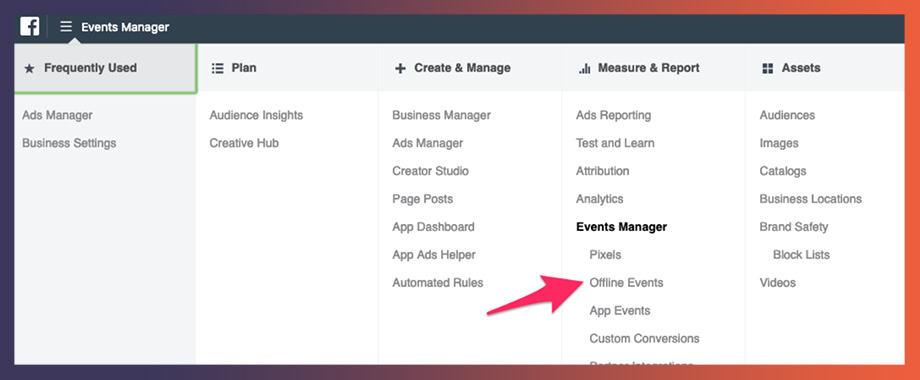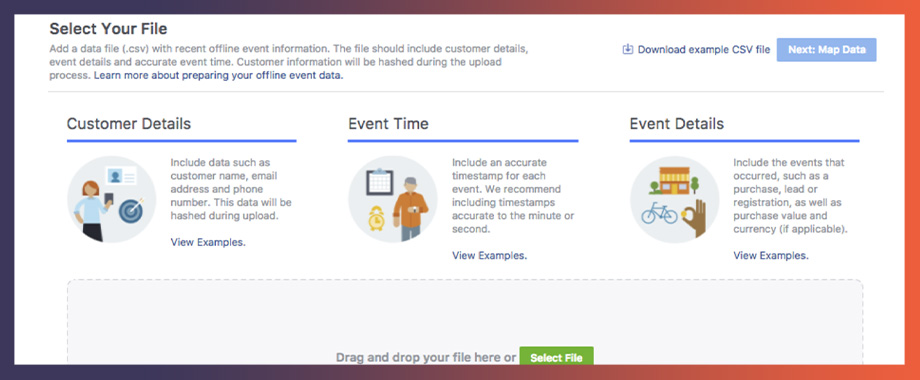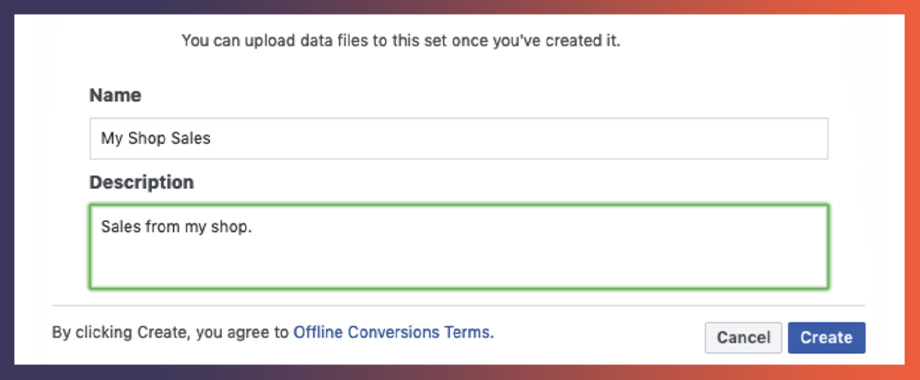Put Together Your Data Puzzle with Offline Conversions
You’re an e-commerce brand, why should you care about offline conversions? Those are for brick-and-mortar retailers, right?
Wrong. The name offline conversions is a misnomer.
It’s true that Facebook (and the other major social apps TikTok, Snapchat, Pinterest and Instagram) created offline conversions to help retailers with physical locations understand how social advertising influences in-store purchases.
But with the changing tides of privacy and consumer protection, offline conversions have developed a new and important use case for e-commerce brands. In the past year and a half, social media apps have lost access to a ton of data. This means less visibility into user interactions. In the upcoming year, e-commerce marketers will be looking through an even more opaque window as restrictions get tougher.
So what do you need to know to get started with offline conversions?
What are Offline Conversions?
Simply put, offline conversions are a way to match data from purchasers to data from your social ads.
When someone makes a purchase through your e-commerce store, you’ll very likely capture some information.
Originally, this feature was intended to benefit brick-and-mortar stores. Car dealerships, boutiques, and supermarkets are a few types of places that come to mind when thinking about offline purchases. By uploading sales data from a CRM to Facebook, these traditional retailers could match in-person purchases to advertising engagement, getting a clearer view of ad spend in the process.
But if you have sales data with customer info (like phone number, email address, or even a name) you too can use offline conversions, even if your business is 100% online.
New Use Cases for E-commerce Businesses
In the changing privacy era, offline conversions provide another use case for your e-commerce brand. They can help you track your purchasers’ actions on social media.
Consumer protection is a paramount concern, and conversations about privacy and online anonymity are growing. Attribution models that use offline conversion data will be valuable to understanding the effectiveness of your ad spend.
Younger generations, like Gen Z, are extremely online. But they value privacy and sustainability, and they demand to see their values reflected in brands. Offline conversion data helps you not only track your purchasers, but understand the personas you attract with your advertising.

How Offline Conversions Help You Measure and Understand Your Social Media Advertising and Audience
Attribution of Ad Spend
With privacy restrictions tightening, getting a clear view of your return on ad spend (ROAS) is challenging to say the least. A blended attribution model is the most reliable way to get an accurate idea of how your social media advertising is translating to conversions.
More and more e-commerce retailers are turning to offline conversions to help put together the puzzle of who’s engaging with your ads.
Alone, offline conversions aren’t a silver bullet that will solve your marketing woes. But paired with a robust first-party data strategy, you’ll have tools at your disposal to reach your audiences and refine your strategy.
Audience Personas
If your first-party data is robust enough, you can dig even deeper into audience intel. Depending on what you collect, you’ll gain a glimpse into the motivations behind your customers’ intent.
Suppose you have demographic and psychographic data at your disposal that tells you not only age, gender, location and income, but also personality, interests and lifestyle attributes. In that case, you can understand who clicks your ads and why.
Do all your purchasers have something in common? These patterns can give you sharper insight into what drives your audience to purchase.
You can also use these lists to create lookalike audiences based on current purchasers for future marketing efforts.
Creative Assets
You can attribute ROAS, and you understand which personas are purchasing through offline conversions. Now you can translate that data into something actionable.
Creative is 80% of an ad’s effectiveness. Offline conversion data is one additional data point that will help you see what’s effective and how it’s breaking through to your audience. You can leverage that data and reflect that in strong branding, precise messaging and memorable creative assets to capitalize on your success and drive more conversions.
Offline Conversions Get Results Online
We recommend blended attribution models for our clients, and we use offline conversions to help us provide the most accurate data. This gives us a holistic view of how social ads are performing and how effectively we are using the budget.
We get standout results for clients because we are able to better attribute conversions back to the client’s ad spend in general. With the latest privacy updates, and more soon to follow, we’ve leveraged an existing product to get the most accurate performance results from clients.
Though offline conversions are essential to getting the full picture, there is one pitfall to consider before jumping right in. If you have customers that use one email for their social accounts and another for online shopping, you may not get the full view into their activities. But as e-commerce marketers know, you almost always have to take incomplete information and make it work for you. Offline conversions give you one more data set to fill in existing gaps. They help de-silo data around your social media ad spend.

Make Offline Conversions Work for Your E-Commerce Business
Ready to start getting more complete and actionable data with offline conversions? Here’s how:
Collect the Data You Need
To start using offline conversions, you’ll first need to create and implement a strong method of collecting first-party data. Beyond adding an email subscription sign-up on your website, you can run lead generation campaigns on Facebook, Instagram, TikTok, Snapchat, Google and LinkedIn. The costs to acquire each lead through these channels can be as low as $2 depending on your industry. As you can see, it’s a palatable spend to get the information you need.
In addition, welcome codes and discounts in exchange for information can prove to be extraordinarily effective. Who hasn’t filled out a lead form on Instagram to get a 15% off welcome discount?
Once you have a solid first-party data strategy, you can make the best use of offline conversions.
Install the Conversion Event
There are a few different ways you can get up and running with offline conversions. You can plug directly into the Facebook API, make use of a partner integration (like a Zapier connection), or run manual uploads. At adQuadrant, we recommend the latter two options because they require less technical development knowledge and are more accessible.
Whichever way you choose to set this up, the first few steps are exactly the same:
- Go to your Events Manager and click Add Data Source
- Select Offline Event Set and then Get Started
- Name your offline event set, and select which ad accounts you want to tie your offline event set to.
- We recommend making use of the auto-tracking feature. This means any new ads you create will, by default, include the offline event set as a conversion source.

Upload and Measure
To upload your contacts, create a CSV file with the records of the conversions you’d like to upload. This can be in the form of a list of leads from your CRM, purchase records from your e-commerce platform, or any lists that you want to tie to a conversion event. Don’t forget the required fields: unique customer identifier information (like phone or email), event name, time and currency are the must haves.
Take these steps:
- Go to “Events Manager” and click your offline event set
- Select the “Upload Events” button and upload a CSV of your conversion data
- Click “Map Data” and confirm that all your columns were mapped correctly
- Select “Review” and make sure there aren’t any major issues (it’s common for a handful of rows to have errors, but you’ll want to make sure it’s not entire columns that have issues)
- Click “Start Upload”
- Once you’ve uploaded your data, it’ll take at least a couple of hours for Facebook to process the data, if not more, depending on the size of the list you uploaded.
Here at adQuadrant, we help our clients run offline conversions on a daily basis so they capture all their sales.
Facebook keeps conversion data for 90 days, but the complexity of event tracking means the more frequently you upload data, the better. After a set period of time, Facebook can no longer deduplicate, or eliminate redundant events, meaning you may be skewing your data by uploading the same information multiple times. Do yourself a favor, and set a daily or weekly reminder to run your offline conversion report!
The Role Offline Conversions Play in the Changing Social Media World
The challenge of marketing on social media is that trends come and go — the landscape is always evolving. Knowing which are passing fads and which are here to stay is something many e-commerce marketers struggle with.
But privacy and the landscape of changing consumer behavior is a larger shift that social media marketers need to start understanding. If you don’t get ahead now, you’ll get left behind.
Offline conversions aren’t a miracle strategy that allow you to bypass new privacy restrictions.
But we can help you understand that they are a piece of the puzzle designed to give you direction in this changing privacy landscape so reach out to us and let’s get started.




